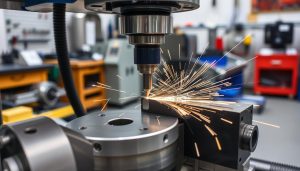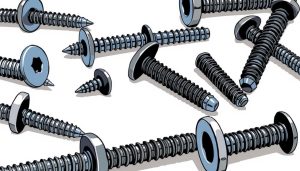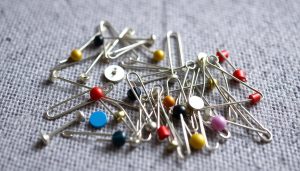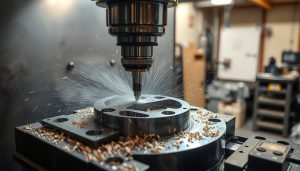In the dynamic world of product development, speed and precision are paramount. Rapid prototyping with CNC (Computer Numerical Control) machining has emerged as a game-changing technology, accelerating the design process and allowing for the creation of high-quality, customized parts with remarkable efficiency. This comprehensive guide delves into the intersection of CNC machining and rapid prototyping, exploring how this cutting-edge approach can transform your product development cycle, reduce costs, and deliver exceptional results.
What is Rapid Prototyping with CNC Machining?
In the world of product development, rapid prototyping has become a game-changer, and CNC prototyping plays a crucial role in this process. Computer Numerical Control (CNC) machining is a revolutionary automated manufacturing technique that allows designers and engineers to bring their digital designs to life with remarkable speed and precision.
Understanding CNC Machining in Prototyping
CNC machining is a computer-controlled process that utilizes cutting tools to shape and sculpt a wide range of materials, from metals to plastics and beyond. By translating digital files into precise machining instructions, CNC machines can quickly and accurately produce physical prototypes that closely match the original digital model.
Why CNC Machining is Ideal for Rapid Prototyping
- High-Speed Prototyping: CNC machines can rapidly fabricate prototypes, significantly reducing the time-to-market for new products.
- Exceptional Accuracy: The computer-controlled nature of CNC machining ensures that prototypes are made with excellent dimensional accuracy and surface finishes.
- Versatility in Materials: CNC machines can work with a diverse range of materials, allowing designers to explore different options for their prototypes.
- Automated manufacturing: The automated nature of CNC machining streamlines the prototyping process, reducing the need for manual labor and increasing production efficiency.
By leveraging the power of computer numerical control, rapid prototyping with CNC machining has become an essential tool for modern product development, enabling designers and engineers to iterate, test, and refine their ideas with unprecedented speed and accuracy.
Key Benefits of Using CNC for Prototyping
CNC (Computer Numerical Control) machining has become a go-to technology for rapid prototyping, offering numerous advantages that streamline the product development process. From speed and efficiency to precision and design flexibility, CNC prototyping delivers a competitive edge for businesses seeking to bring their ideas to life quickly and effectively.
Speed and Efficiency in Prototype Production
One of the primary benefits of CNC prototyping is the remarkable speed at which it can produce accurate, functional prototypes. Unlike traditional manual machining methods, CNC machines operate with computer-controlled precision, reducing the time required for each iteration. This rapid turnaround allows businesses to iterate and refine their designs more frequently, accelerating the product development cycle and bringing innovative products to market faster.
High Precision and Quality Assurance
CNC machining technology ensures exceptionally high levels of precision, consistently delivering prototypes that meet the most demanding specifications. The automated nature of CNC operations minimizes human error, ensuring tight tolerances and a consistently high level of quality across multiple prototype iterations. This attention to detail is crucial for complex designs, as it allows businesses to validate their concepts with confidence before investing in full-scale production.
Flexibility with Complex Designs and Materials
The versatility of CNC machining is a significant advantage for prototype development. CNC machines can handle a wide range of materials, from metals and plastics to advanced composites, enabling designers to experiment with different materials to find the optimal solution for their product. Additionally, CNC technology can tackle intricate, three-dimensional designs with ease, empowering engineers to bring their most innovative ideas to life without compromising on design flexibility.
By leveraging the speed, precision, and design flexibility of CNC prototyping, businesses can gain a competitive edge in their product development efforts, accelerating the journey from concept to market-ready product. As CNC technology continues to evolve, the benefits it offers for rapid prototyping will only become more pronounced, making it an increasingly essential tool for modern product development.
Common CNC Machining Methods for Prototyping
When it comes to rapid prototyping, CNC machining offers a versatile arsenal of techniques to address a wide range of prototyping needs. From intricate geometries to circular components, CNC machining provides the precision and flexibility required to bring product designs to life. Let’s explore the common CNC machining methods utilized in the prototyping process.
CNC Milling for Detailed Prototypes
CNC milling is a popular choice for creating detailed, complex prototypes. This subtractive manufacturing process uses rotating cutting tools to remove material from a workpiece, allowing for the creation of intricate features, grooves, and contours. CNC milling excels at producing prototypes with tight tolerances, complex geometries, and high-quality surface finishes, making it an ideal solution for prototypes destined for industries such as aerospace, automotive, and consumer electronics.
CNC Turning for Circular Parts
For prototypes requiring circular or cylindrical components, CNC turning is the go-to method. This process involves rotating the workpiece against a stationary cutting tool, enabling the efficient production of parts with rotational symmetry. CNC turning is particularly well-suited for creating prototypes of components like shafts, bushings, and other circular parts commonly found in mechanical assemblies.
CNC Lathe and Automated Machining in Prototyping
In addition to CNC milling and turning, automated machining techniques such as CNC lathe operations play a crucial role in prototyping. CNC lathes can rapidly produce parts with complex profiles, grooves, and threads, making them invaluable for producing prototypes of intricate mechanical components. Furthermore, the integration of automation and advanced CNC programming can streamline the prototyping process, improving efficiency and reducing lead times.
| CNC Machining Method | Ideal for Prototypes | Key Advantages |
|---|---|---|
| CNC Milling | Complex geometries, intricate features | High precision, tight tolerances, quality surface finishes |
| CNC Turning | Circular, cylindrical components | Efficient production of parts with rotational symmetry |
| CNC Lathe and Automated Machining | Intricate mechanical components, rapid prototyping | Streamlined efficiency, reduced lead times |
By leveraging the versatility of CNC milling, turning, and automated machining techniques, prototyping professionals can tackle a wide range of prototyping challenges, from detailed geometric features to precisely engineered circular parts. This comprehensive toolkit allows for the rapid and cost-effective creation of functional prototypes that closely mirror the final product design.
Materials Used in CNC Prototyping
When it comes to rapid prototyping with CNC machining, the choice of materials plays a crucial role in determining the success of the final product. CNC machining offers a wide range of materials suitable for prototype development, from metals and plastics to composites, each with its unique properties and applications.
Popular Materials for CNC Prototyping
- Metals: Aluminum, stainless steel, titanium, and brass are common choices for CNC prototyping due to their strength, durability, and machinability.
- Plastics: Acrylic, ABS, polycarbonate, and nylon are popular plastic materials used in CNC prototyping, offering versatility, cost-effectiveness, and a wide range of finishes.
- Composites: Carbon fiber, fiberglass, and even wood-based composites are increasingly utilized in CNC prototyping, providing exceptional strength-to-weight ratios and unique design possibilities.
Material Selection Based on Prototype Requirements
The choice of CNC materials for prototyping is often driven by the specific requirements of the project, such as the intended use, testing needs, and end-use application. For instance, metal prototypes may be preferred for functional testing, while plastic or composite parts may be more suitable for aesthetic and ergonomic evaluations. By carefully considering the material properties and their compatibility with the prototype’s design and purpose, designers and engineers can ensure the highest level of success in their CNC prototyping endeavors.
| Material | Key Characteristics | Common Applications |
|---|---|---|
| Aluminum | Lightweight, durable, and easily machinable | Automotive, aerospace, and consumer electronics prototypes |
| ABS Plastic | Affordable, impact-resistant, and easy to finish | Consumer products, toys, and household appliance prototypes |
| Carbon Fiber | High strength-to-weight ratio, customizable, and precise | Aerospace, automotive, and high-performance product prototypes |
By carefully selecting the right CNC materials for prototyping, designers and engineers can ensure that their designs meet the necessary functional, aesthetic, and performance requirements, ultimately leading to more successful product development and faster time-to-market.

Applications of CNC Machining in Prototyping
In the rapidly evolving world of product development, CNC machining has emerged as a powerful tool for creating functional prototypes across diverse industries. From the intricate designs of aerospace prototypes to the precision-engineered automotive prototyping, and the innovative solutions for medical device prototypes, this versatile technology is transforming the way companies bring their ideas to life.
Aerospace and Automotive Prototypes
The aerospace and automotive sectors are prime examples of industries that heavily rely on CNC machining for prototyping. Manufacturers in these fields require precise, high-quality parts to ensure the safety and performance of their products. CNC machining allows them to quickly produce complex geometries, intricate details, and tight tolerances, enabling engineers to validate their designs and optimize performance before investing in full-scale production.
Consumer Electronics and Medical Device Prototypes
In the realm of consumer electronics and medical devices, CNC machining is instrumental in creating functional prototypes for testing and validation. From the sleek housings of smartphones to the intricate components of medical instruments, this technology enables designers and engineers to bring their innovative concepts to life with exceptional accuracy and repeatability. The ability to work with a wide range of materials, including plastics, metals, and composites, further expands the possibilities for these industries.
Rapid Prototypes for Engineering and Product Testing
Beyond specific industry applications, CNC machining is widely used to produce rapid prototypes for general engineering and product testing purposes. Whether it’s validating the fit and function of a new design or evaluating the performance of a component under real-world conditions, CNC-machined prototypes provide a cost-effective and efficient way to gather crucial data and refine products before committing to full-scale production.
“CNC machining has revolutionized the way we approach prototyping, enabling us to bring our ideas to life with unprecedented speed and precision.”
– John Smith, Lead Engineer at ABC Aerospace
Challenges in CNC Prototyping
While CNC machining offers numerous benefits for rapid prototyping, there are also a few challenges that manufacturers must navigate. Understanding these potential hurdles is key to maximizing the advantages of this versatile technology.
Balancing Costs for Small Production Runs
One of the primary concerns in CNC prototyping is the cost associated with small-scale production runs. Setting up CNC machines for low-volume projects can be more expensive than larger-scale manufacturing. Manufacturers must carefully weigh the investment required against the prototype’s value and potential return.
Material Limitations in Prototype Machining
The range of materials suitable for CNC prototyping is broad, but certain specialized materials may pose additional challenges. Factors like material hardness, machinability, and availability can impact the feasibility and cost-effectiveness of CNC prototyping. Staying informed on material innovations is crucial for overcoming these limitations.
Maintaining Consistent Accuracy Across Prototypes
Precision is a cornerstone of CNC prototyping, but ensuring that accuracy is maintained across multiple prototype iterations can be a challenge. Factors like tool wear, fixturing, and programming adjustments must be carefully managed to deliver consistent, high-quality results. Robust quality control measures are essential for meeting this challenge.
By understanding and addressing these key challenges, manufacturers can unlock the full potential of CNC machining for rapid prototyping, delivering cost-effective, high-precision parts that accelerate product development and innovation.

How to Choose the Right CNC Prototyping Service
When it comes to rapid prototyping, selecting the right CNC service provider is crucial for ensuring high-quality prototypes and efficient turnaround times. As you navigate the market, there are a few key factors to consider that can help you make an informed decision.
Evaluating Experience, Capabilities, and Speed
Start by assessing the CNC service provider’s experience in the industry. Look for a company with a proven track record of delivering precision prototypes for clients across various sectors. Equally important are their technological capabilities, including the range of CNC machines and materials they can work with. Prioritize providers who can offer a comprehensive suite of CNC machining solutions to meet your unique prototype quality requirements.
Additionally, pay close attention to the service provider’s ability to deliver short lead times. Rapid prototyping is all about speed, so you’ll want a partner who can efficiently transform your designs into physical models without compromising accuracy or attention to detail.
How to Ensure High-Quality Prototypes and Short Lead Times
To ensure you receive the best possible CNC service selection for your prototyping needs, consider the following:
- Ask for references and case studies showcasing the provider’s expertise and past successes.
- Inquire about their quality control processes and inspect sample prototypes to gauge their attention to detail.
- Discuss their turnaround times and production capacity to understand how they can meet your project’s timeline.
By taking the time to evaluate CNC service providers, you’ll be better equipped to find a partner who can deliver the high-quality prototypes you need, while also meeting your deadlines and budget requirements.
“Rapid prototyping with CNC machining is a game-changer for product development. The key is finding a service provider who can consistently deliver precision parts and meet your timeline.” – John Smith, Product Manager
Shixinproto provides precision CNC prototyping services for different industries
At Shixinproto, we pride ourselves on delivering exceptional CNC prototyping services to customers across a wide range of industries. With our state-of-the-art CNC machining capabilities and unwavering commitment to precision, we help businesses transform their ideas into tangible prototypes that can be tested, refined, and brought to market with confidence.
Our team of skilled technicians and engineers work closely with clients to understand their unique requirements, whether they’re in the aerospace, automotive, consumer electronics, or medical device sector. By leveraging the latest CNC machining techniques, we’re able to produce high-quality prototypes that meet the exacting standards of our diverse clientele.
At the heart of our offering is a relentless focus on quality and attention to detail. From material selection to intricate design features, every aspect of our CNC prototyping process is meticulously planned and executed to ensure the best possible results. With Shixinproto, our clients can trust that their prototypes will be delivered on time, within budget, and with the level of precision they demand.
FAQ
What is rapid prototyping with CNC machining?
Why is CNC machining ideal for rapid prototyping?
What are the key benefits of using CNC for prototyping?
- Speed and efficiency in prototype production
- High precision and quality assurance
- Flexibility with complex designs and materials
What are the common CNC machining methods used for prototyping?
- CNC milling for detailed prototypes
- CNC turning for circular parts
- CNC lathe and automated machining for increased efficiency
What materials are commonly used in CNC prototyping?
In which industries is CNC prototyping commonly used?
What are the challenges in CNC prototyping?
- Cost considerations for small production runs
- Material limitations
- Maintaining accuracy across multiple prototypes
Overcoming these challenges is crucial to maximizing the benefits of CNC prototyping.





